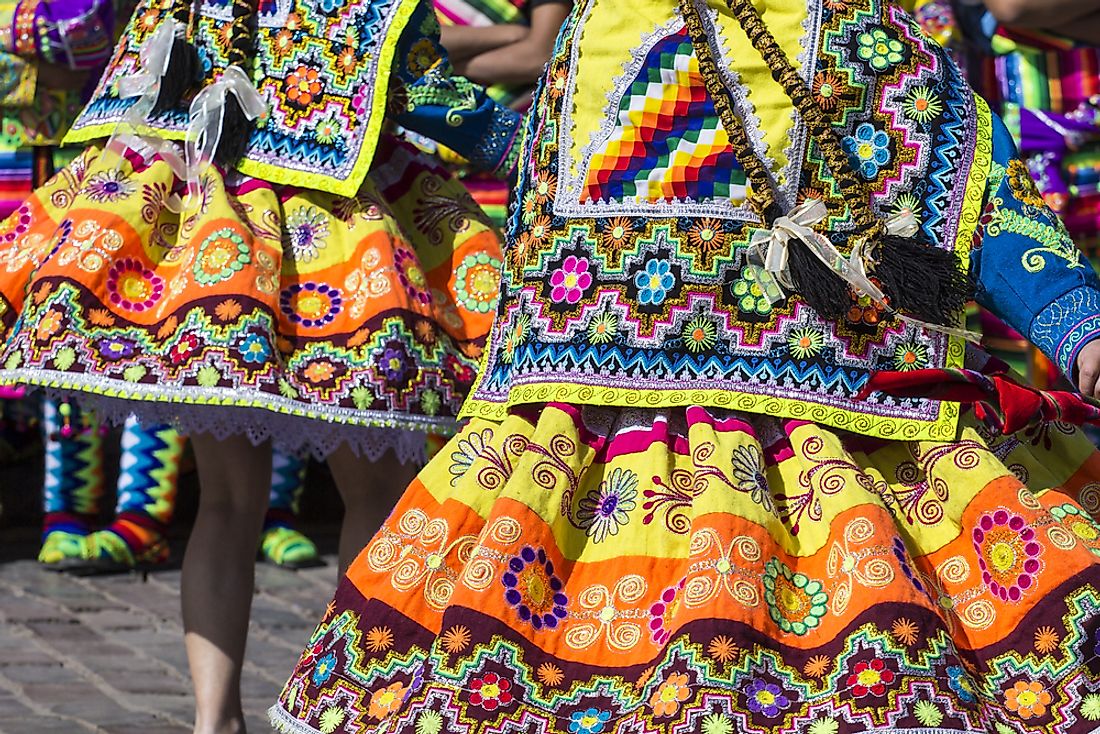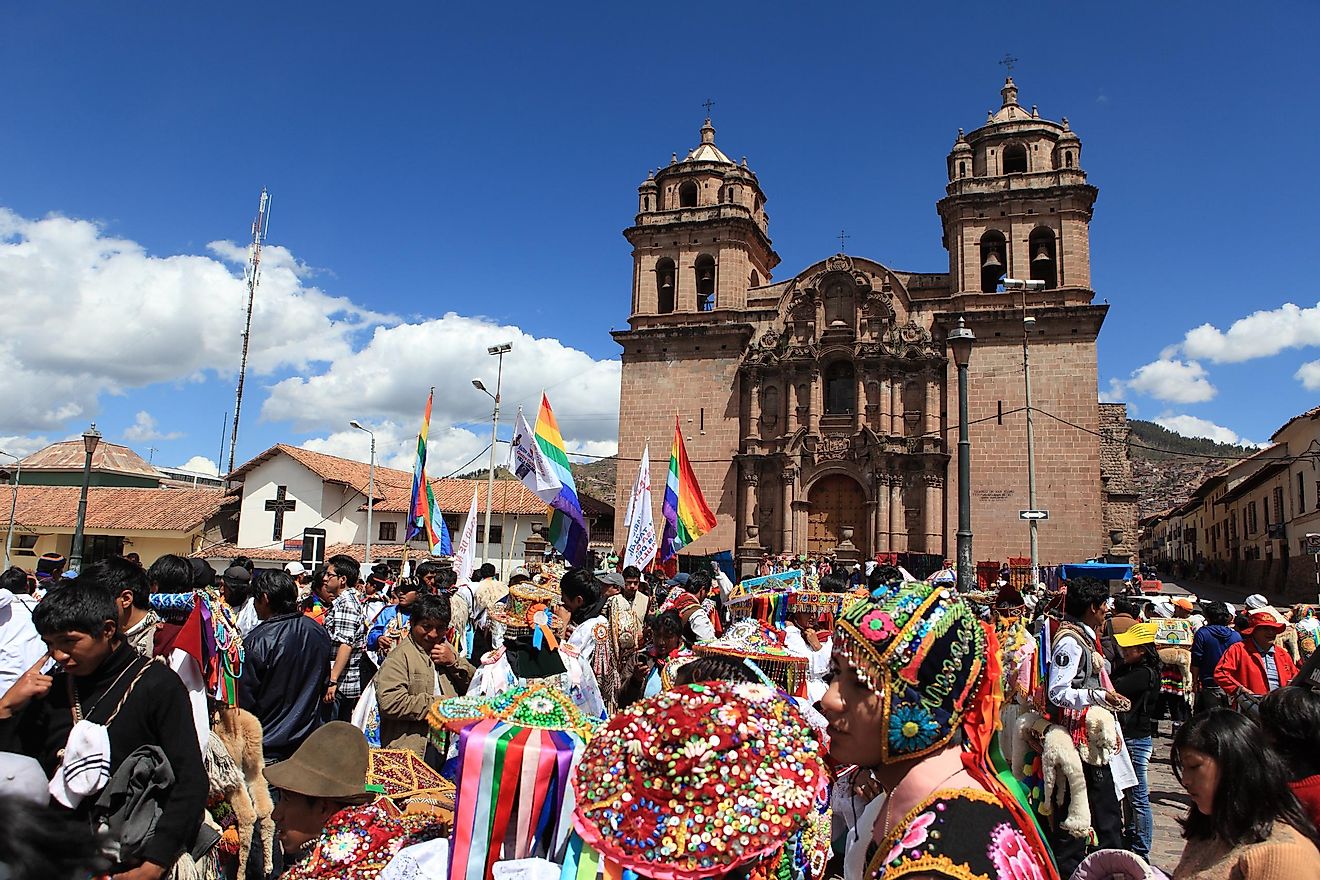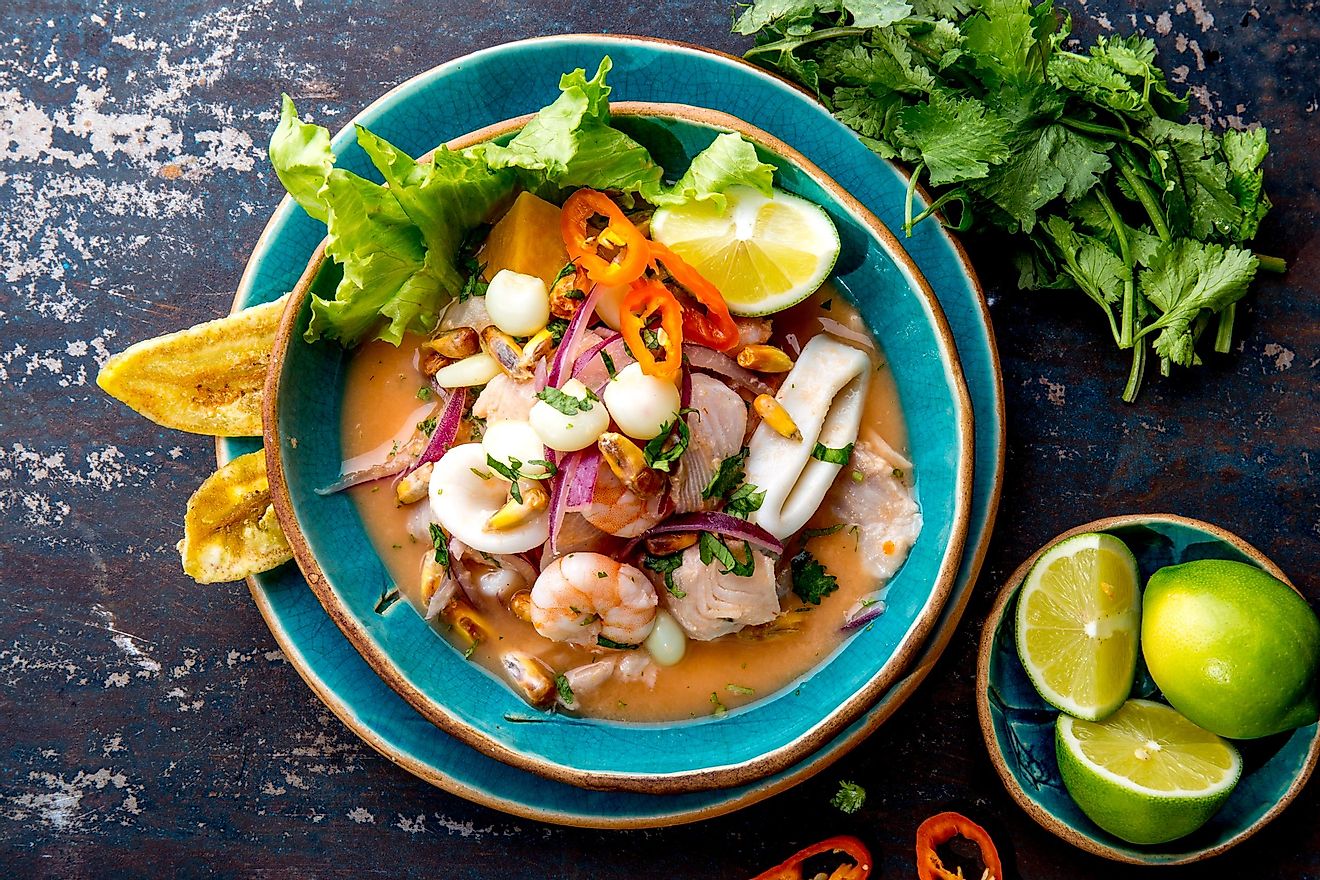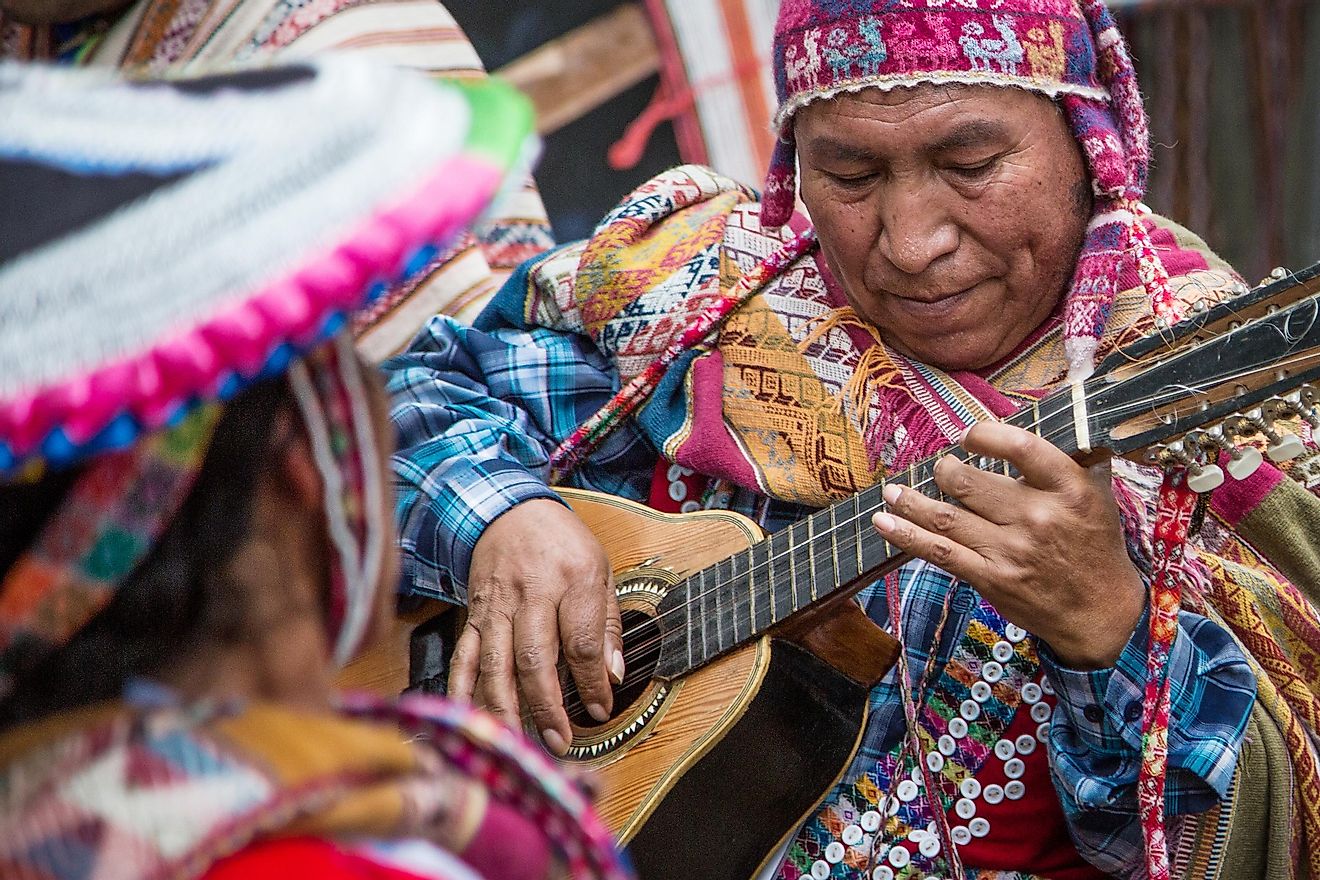The Culture Of Peru

- Peruvian culture is a mix of Spanish, Indigenous and African influences.
- Catholicism is prevalent in Peru, and dictates much in the way of social customs, festivals and holidays.
- Football (also known as soccer) is widely popular in this country.
- Cuisine is regionally specific, but along the Pacific seafood diches such as ceviche are common.
- Peru has a strong literary current.
The current national identity of Peru has been formed through the combination of customs found among Spanish colonists, Indigenous peoples, and former enslaved peoples. These different traditions have come together to create a shared culture among the people of Peru.
Within the country, however, isolated geographic regions have allowed some specific customs to remain alive with less influence from outside sources. These regions are divided among the coastal desert, the Andes mountains, and the Amazon rainforest. All these combining customs and regional-specific histories come into play when talking about this country’s national identity.
Peruvian Religion And Festivals

The vast majority of the population of Peru reports Catholicism as their religious identity (81.3%), this is followed by Protestantism (12.9%), other religions (3.3%), and no religious affiliation (2.9%). In order to help spread the Catholic faith, colonists often built large monasteries and cathedrals over important Incan religious sites. Indigenous beliefs have been combined with Catholic teachings over time to create a unique religious atmosphere in this country.
This combination can be seen in the many religious festivals and celebrations that take place here. In Cuzco, for example, the Inti Raymi festival still occurs every year during the winter solstice, sometime in late June. This event was practiced by the Incas to honor the sun god, Inti.
Both Cuzco and Lima have distinct Catholic celebrations in honor of two separate artworks depicting Jesus that managed to survive two separate large earthquakes. In Lima, the celebration is held in October in honor of the Lord of the Miracles, a mural of Jesus that withstood a magnitude 7.8 earthquake that decimated the buildings surrounding it in 1746. In Cuzco, it is held on Easter Monday in honor of Lord of the Earthquakes, a statue of Jesus that is believed to have reduced the damage of a 1650 earthquake.
Cuisine Of Peru

The cuisine of Peru varies depending on the geographic location. Along the Pacific coast, one of the most popular dishes is ceviche. This dish is prepared by marinating raw seafood with lime juice and serving it with a garnish of sweet potato and toasted corn. In the rainforest, a typical dish is the tacacho. Tacachos are smashed green plantain formed into a ball, filled with meat (usually pork), wrapped in a banana tree leaf, and cooked. In the Andes region, guinea pig (called cuy) is a traditional meal and can be served either fried or baked.
Peru is also home to creole dishes, which tend to be concentrated in the capital city Lima. Peruvian creole has evolved from the influence of Chinese and African dishes. Two of the most popular creole dishes are: Lomo Saltado, a beef stir fry served with french fries over rice, and Anticuchos, marinated beef hearts cooked on skewers.
Peruvian Music

The music of Peru is just as diverse as the food and has as much history as the religious traditions. It has developed over the years from an influence of Spanish, African, and Andean musical traditions. The national instrument of Peru is the charango, which is a stringed instrument that belongs to the lute family. It was created in this country in an attempt to imitate the sounds of the vihuela from Spain. Another important instrument here is the cajón, a hollow wooden box with a hole on one side. Performers typically sit on top of the box and strike it with their hands to keep rhythm. This percussion instrument was created by African slaves along the coastal areas and today is a centerpiece in Afro-Peruvian music. From the Andes region of this country are flutes, panpipes, and other wind instruments.
Peruvian Arts And Literature

Peru has a rich history of arts and literature and continues to celebrate and preserve these two parts of its culture with museums located throughout the country.
Peruvian literature has its roots in the storytelling traditions of the pre-Inca Indigenous peoples. During the Incan era, stories were retained with the help of the quipu, a series of knotted strings used to record information. Modern literature began to form during the colonial era and has played an important role in society through the neo-classical, modern, and contemporary eras. Some of the most well-known authors from Peru include Jose Carlos Mariátegui, Mario Vargas Llosa, and César Vallejo.
Artwork in Peru has a similar timeline to the literature. Ancient Peruvian peoples left behind important traces of stone sculptures, ceramics, and textiles. In 1919, the Fine Arts School in Lima was founded, having a significant influence over the painting styles of that time. Today, Chulucanas pottery, characterized by its black and white geometric designs, continues to be produced in the northern region of the country and is exported internationally.
Sports In Peru

The most popular sport in Peru is football (known in the US and Canada as soccer). This country has both men’s and women’s national soccer teams. The most well known teams here are Alianza, Sporting Cristal, and Universitario. The biggest achievements of the national footballs teams include two Copa America wins in 1939 and 1975. Additionally, Peruvian teams have competed in the FIFA World Cup in 1930, 1970, 1978, and 1982. Some of the most famous players from this country are: Teófilo Cubillas, César Cueto, Nolberto Solano, and Claudio Pizarro.
Social Beliefs And Customs In Peru

The social beliefs and customs of Peru are diverse and depend on a number of factors. Because of the history and widespread practice of Catholicism, religion has a significant influence over many of the social beliefs today. Sundays are primarily reserved for attending church service and having a family get together in the afternoon for lunch.
The culture here is relatively conservative and patriarchal. In most households, men typically work to support the family while women stay home to tend to domestic responsibilities, although in recent years women do participate in the labor force, particularly in Lima.
Other social customs involve how people interact with each other. Upon greeting a new acquaintance or colleague, most individuals hug and kiss on the left cheek. Some people, particularly in a professional setting, will simply shake hands. When arriving for a social function, the norm is that Peruvians show up anywhere from a half hour to an hour late. This is a common practice and locally referred to as operating on Peruvian time.







